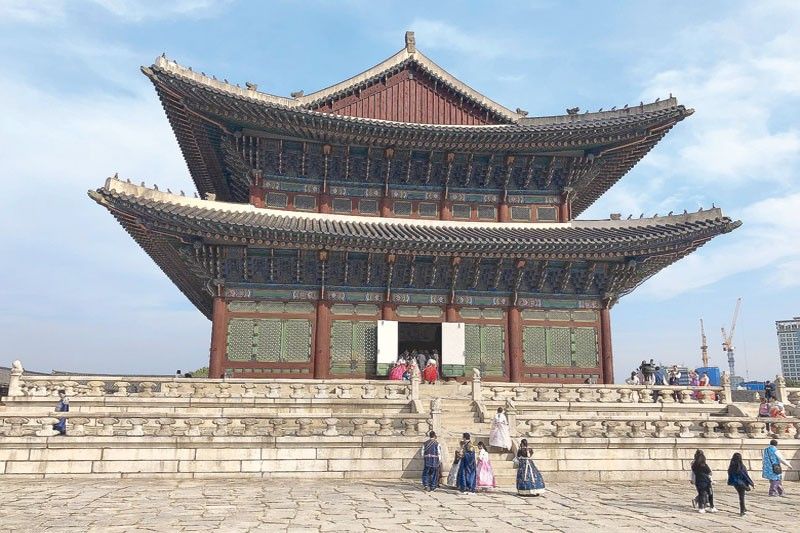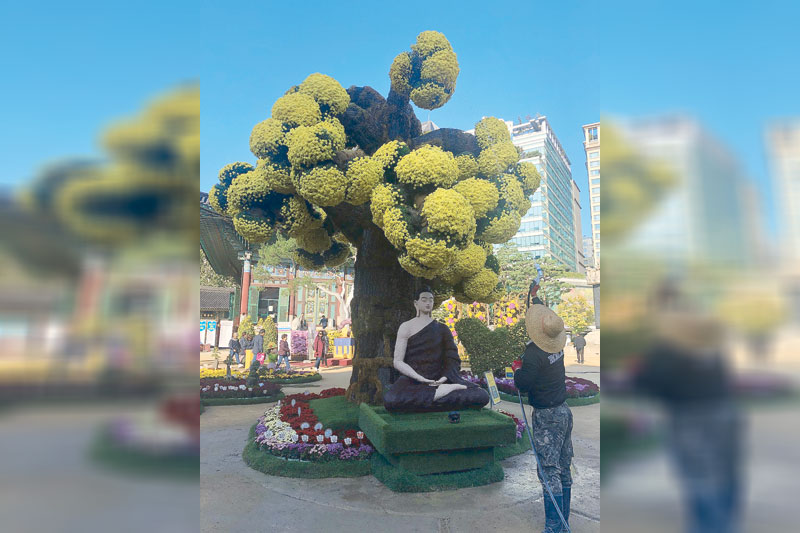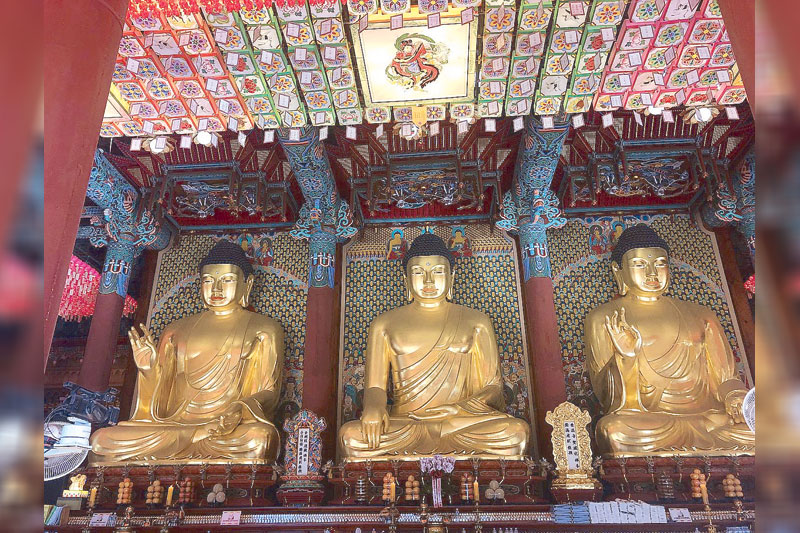Sublime Seoul: Worthy of its Reputation

Koreans continue to be the top visitors to our islands, but more and more we Filipinos are reciprocating and visiting the Land of the Morning Calm. Despite the increased waiting time for a visitor’s visa (due to increase in applicants, we were told), we wanted to rediscover South Korea yet again.
Our absolute first stop was our perennial favorite, the National Museum of Korea, depository of its history and art, the country’s cultural landmark, attracting over 3 million visitors annually.

With almost 300,000 square meters – sixth largest in the world – it has over 310,000 pieces in its collection.
A huge open space greeted us with various pagodas and stupas, verdant plants and blooming gardens.
On the first floor, the Prehistory and Ancient History Gallery traced Korean history from the Paleolithic era until today – periodically interspersed with wars and colonizations. We examined the daily tools, excavated relics and royal ornaments that reflected their lifestyle of old.
Thanks to the generous spirit of sharing, the second floor’s Donation Gallery has come to fruition. The 890-piece level contains works on loan from private collections. Some of the treasures include intricate woodwork dating back to the Joseon Dynasty, ceramics from the Goryeo era and even an extensive, well-preserved selection of roof tiles from the Three Kingdoms period.

The Calligraphy and Painting Gallery, which highlights Buddhist paintings in the unique eastern style, chronicles the masterful pieces of painters and writers with historic subjects through visual or textual media.
The third floor accommodates the Sculpture and Crafts division, a 630-item collection of Korean Buddhist metal and porcelain handiwork. It even has a separate room for spiritual icons and idols.
Meanwhile, the Asian Arts section focuses on the similarities and differences of Asian and Western art through the influence of the Silk Road.
Our knowledgeable guide pointed out the impressive collection of National Treasures, as designated and numbered by the nation’s Cultural Heritage Administration. What caught our eye was the National Treasure of Korea No. 191, the fifth-century Silla gold crown from a tomb, which reflected the political and social class of its lofty owner in contrast to the ordinary citizens.
Another curious sight was the National Treasure of Korea No. 86, the Gyeongcheonsa Ten-Story Pagoda, built in 1348, then illegally smuggled to Japan and finally returned in 1918. Today it stands as a proud testimony of the colorful history of its people.
We then opted for some quiet time in a pocket of solitude in the middle of town – the Jogyesa Temple, the 14th century center of Korean Buddhism, the main venue of rituals and ceremonies.
At the serene Dharma Hall, we honored with utmost respect three golden Buddha images, where we were beholden to elderly ladies on their pillows in different comfortable positions, eyes shut, with a sprinkling of mature men – all in a seemingly trance-like state of meditation.
The entire environs were carpeted with flowers in various colors and sizes, and bushes shaped as animals. The top attraction was Korea’s Natural Treasure No. 9, a towering ancient white pine tree over half a century old.
To cap off the night, we rushed to a musical entitled Cookin’ Nanta, with translations which quickly melted the language barriers.
The slapstick series of events takes place in a busy kitchen, as the hot-headed manager rushes the crew to prepare a detailed menu for a huge affair with no previous heads up at all. As the problems keep compounding, with the manager’s nephew causing more trouble, it puts to shame Murphy’s Law – Anything that can go wrong indeed did go wrong!

What ensued were wacky fast-paced acrobatic feats and the clashing of kitchen knives, with sparks to boot.
The following day found us at the Gyeongbok Palace, built in 1395, the largest of the Five Grand Palaces within the city. It served as the main mansion of the kings and their royal families of the Joseon Dynasty. Today, it is regarded as one of the grandest and most beautiful castles of its era, as it boasts six grand gates and quaint bridges, a multitude of intricate buildings and peaceful pavilions such as the Throne Hall, dozens of courtyards and 7,700 rooms.
The palace complex houses the National Folklore Museum. With over 98,000 artifacts that showcase the traditional way of old Korea, it dwells on their history, as the displays chronicle their ancestors’ way of life. It likewise delves into the ideology and influence of Confucianism.
Our late afternoon itinerary was the Cheongyecheon Stream, an 11-kilometer modern waterform that runs through most of downtown. Previously covered with an elevated highway, this was created as part of an urban restoration project and passes through a total of 22 bridges as it cascades into the Hangang River.
A magnet for homeward-bound strollers, the pedestrian boulevard is often decorated with honest-to-goodness artisanal handicrafts with announcements of the city’s latest attractions and promotions – a tableau of changing scenes. We chose to walk through the course of the flow, observing the daily life of Seoul.



















